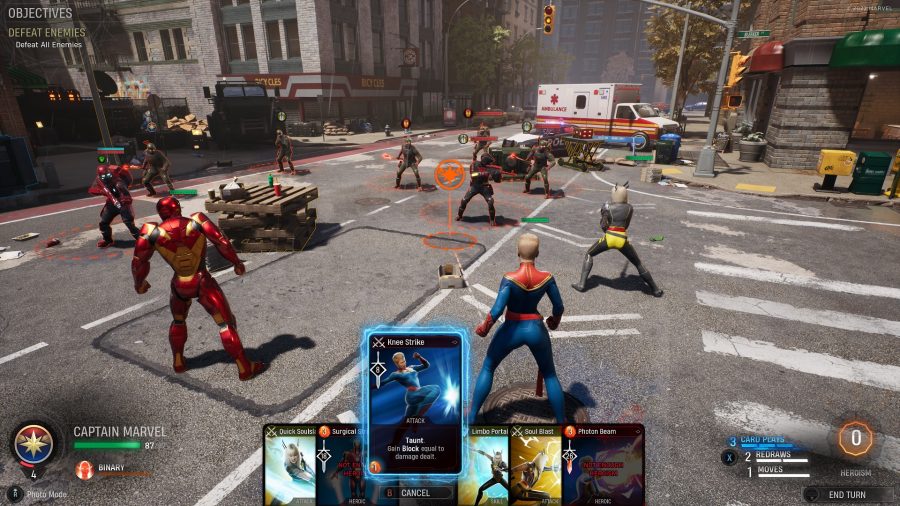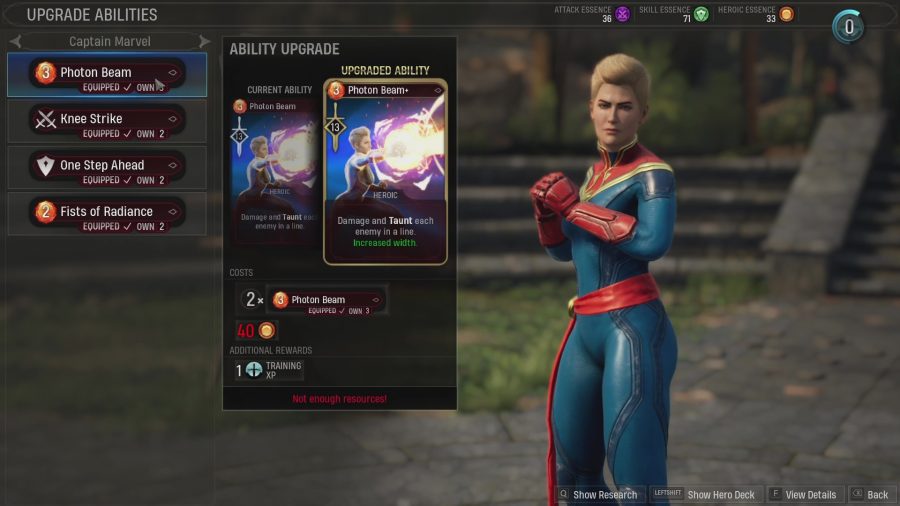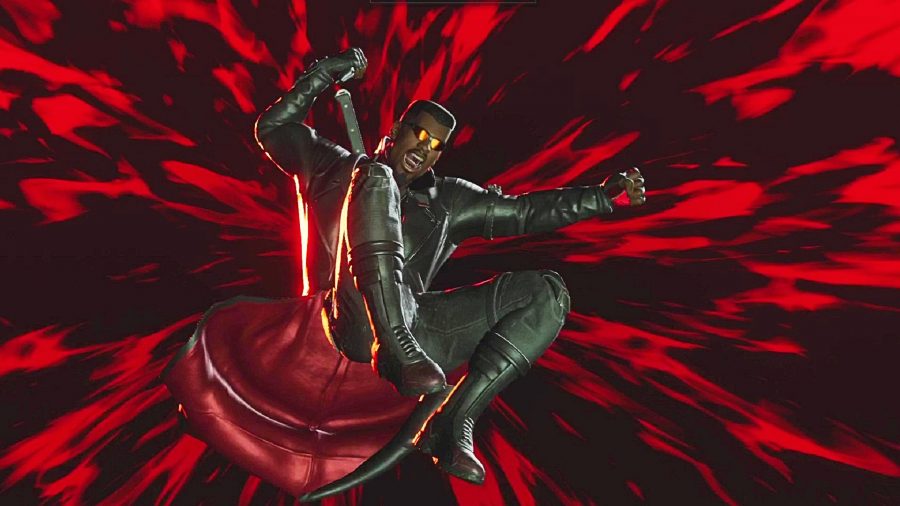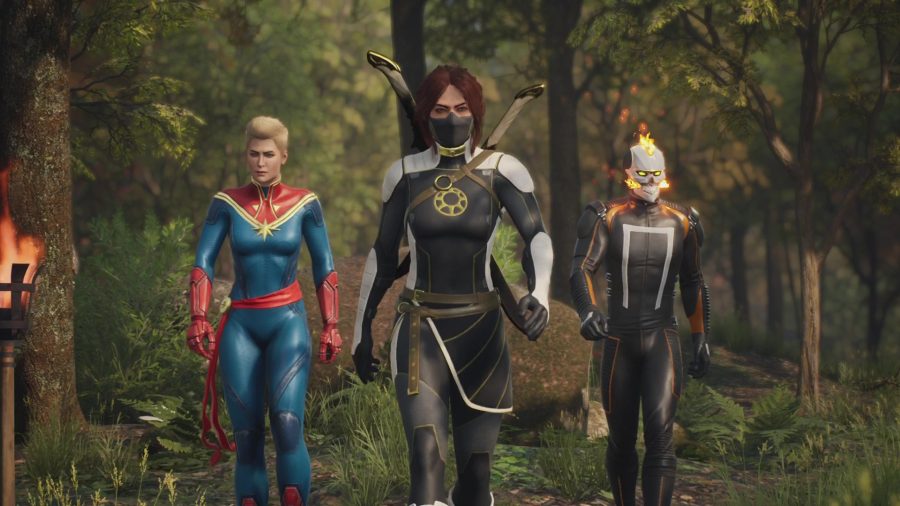Marvel’s Midnight Suns are nothing short of bold. He’s brave enough to try to make a Marvel video game given the popularity of this IP, and even braver enough to make it a strategy game based on one of the most niche comics of the ’90s. And given that this team of development in particular is famous for XCOM, Firaxis reaches the pinnacle of bravery by going in entirely new directions, adding an overworld RPG layer and an entirely new turn-based combat system, to name a few.
But, as they say, luck smiles on the brave. I spent most of the day playing the first sections of Midnight Suns, and I can tell you that this unique turn-based strategy game will defy all your expectations from the initial announcement.
The basics remain the same as revealed during the announcement. You lead a team of Marvel superheroes as Hunter, your avatar. This fully customizable hero will drive valid the largest crossover event in history since the fortress known as the Abbey, which is the center and center of Firaxis’ new RPG mechanics. Unlike XCOM, you can roam this space in real time, talking to individual heroes and exploring the area for secrets, gear upgrades, and pranks.
Marvel’s Midnight Suns follow a daily cycle. You wake up, do something, choose a mission, save the day. Then you go to bed and the whole dance begins the next morning, with key plot beats and other threads developing over time.
XCOM fans will find the rhythm familiar, and the spirit of XCOM can be felt in many other places as well, such as exploring. Elsewhere, the influence of games like Fire Emblem: Three Houses is also evident, but the foreground is dominated by bold touches and new ideas. Nowhere is this more evident than with the new combat mechanics.
I was overwhelmed by how much I liked Firaxis’ version of tactical combat.
To be honest, I was blown away by how much I liked Firaxis’ new take on tactical combat. After the initial announcement of the game, the new map mechanic received a lot of attention. If this has led you to guesswork, put it aside; He is not a card butler. You are only allowed three heroes per mission, and each hero is only allowed eight cards in their “deck”, for a maximum of 24 cards.
While playing, I noticed some clear synergies between cards, and certainly none between cards drawn from different heroes, so one has to wonder what Firaxis’s intentions are.
“It’s not a CCG, it’s not a traditional card battle,” says the franchise’s lead producer, Garth DeAngelis. “We need dynamically allocated capacity where you don’t know what you’re going to get at any given time. And that’s the part that really excites me.”

The studio wants to subvert the traditional XCOM dynamic where you know exactly what you can do and when, but you don’t know if it will succeed. “We wanted to tap into what makes a hero special,” DeAngelis says, adding that the idea of a missing hero is wrong: “Heroes succeed.” Thus, Midnight Suns places the player in front of a series of tactical puzzles to solve using a randomly chosen set of abilities for maximum effect.
We wanted to capture what makes a hero special: Heroes succeed.
“We present them as cards, which are good for presentation purposes. There’s quite a bit of vocabulary and player vocabulary to figure out what they are if they’re dealt as a deck.”
In this design, the Midnight Suns fights make a lot more sense and are a lot more fun to play. Each turn is a new puzzle, as you are dealt a new hand of ability cards to use against your enemies. Depending on the objective, you may not only care about beating bad guys to a pulp; perhaps there are civilians that need to be rescued, or a helicopter that needs to be prevented from taking off.

The hero abilities are varied and fun to use, but what really makes Midnight Suns’ tactical combat shine is the environment. Most missions will have stuff are scattered around the battlefield: a lamppost, a stone, a large box, etc. – and you can use them all as additional puzzle pieces. Everything from slamming an enemy into an electrical box to pushing them off a ledge is on the table. You can even jump things to perform aerial attacks, which generally deal more damage than basic attack skills.
And that’s not even mentioning the cards themselves. One cool thing about this mechanic is that as you collect additional cards, the hard deck cap means you can spend your doubloons to upgrade used copies of that card. Over time, your hero’s power and abilities will evolve and change; maybe you just focus on upgrading your starting cards, or maybe you switch to advanced cards once you have them. Maybe you do both.
Firaxis is trying out some new things here and possibly risking inaccurate combat speculation with the map view. Also, I suspect there are too many for a single resource; one cosmetic resource, GLOSS, feels particularly useless, and some mechanics, like the ability to collect resources just by looking at furniture, feel a bit fun and dated. Throw in collectibles, hangouts, and side quests around the Abbey and you can almost blame the crew for throwing things at the wall to see what sticks.

Of course, the usual Early Access preview caveats apply, so we’ll see how these things fit in at launch. Despite all the new discoveries, Firaxis has already laid a solid foundation: tactical combat is already a trump card, and the studio can be proud of how it uniquely captures the energy of Marvel superhero action. . I can’t wait to get my hands on it.
Marvel’s Midnight Suns will be released for PC via Steam and the Epic Games Store on October 7, 2022. It’s available for pre-order now and will include cosmetic microtransactions and a Season Pass DLC that will add at least four new characters after launch. .
Source : PC Gamesn

